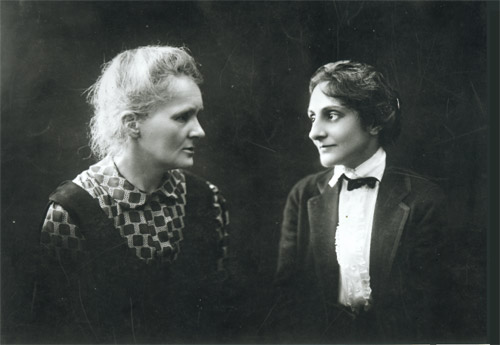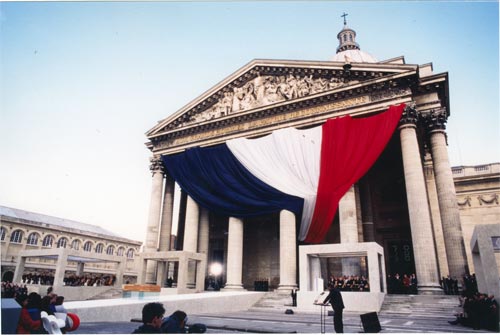Marie Curie

Marie Curie with Miss Meloney
Miss Meloney was an American journalist who, full of admiration for Marie Curie, had managed to get an interview with here. At the end of the interview, « Missy » asked Marie Curie « And what would you like to have? » The answer was « One gram of radium. » Astonished, Missy inquired about it, and having learned the price of one gram of radium, she successfully organized a subscription to American women. Then, in 1921, she invited Marie Curie in the United States. It was during this trip that the President of the United States gave to Marie Curie a gram of radium bought through the collection. Subsequently Miss Meloney organized a second subscription. This time, Marie Curie gave a gram of radium to Poland.
© ACJC
Marie Sklodowska-Curie had an exceptional destiny. Born in Poland, she came to graduate school in Paris, young girls in her country being not admitted to the Faculty. She obtained her degree in physics and mathematics and also the very prized degree of « agrégée en Physique ».
In 1895 she married Pierre Curie, who joins her when she discovers that the « uranium rays » are not only emitted by uranium and are a general property of matter, which she called « radioactivity ». By making hard work, they discovered polonium and later on radium which is a million times more active than uranium.
The Nobel price was twice awarded to Marie Curie. After the tragic death of Pierre Curie in 1906, she continued on her own research. At the Radium Institute, she formed physicists from around the world.
Their discoveries cost Marie Curie her life. She died on the 4th July 1934 as a result of radiation effects which she had been exposed a while without knowing the dangers.
Her daughter Eve wrote a remarkable biography of Marie Curie. The ashes of Pierre and Marie Curie were transported to the Pantheon in April 1995.

1995, transfer of Pierre and Marie Curie remains to the Pantheon
On April 29, 1995, the remains of Pierre and Marie Curie were transferred to the Pantheon. The ceremony was presided by François Mitterrand and Lech Walesa with an address by the Nobel laureate Pierre-Gilles de Gennes. Marie Curie is the first woman to enter the Pantheon for her own merits.
© ACJC (Christophe Gruner)
Other articles on the subject « Discoveries »
Three radiations
Understanding the nature of alpha, beta and gamma rays In the years following the discovery of ra[...]
Discovery of the Nucleus
A new vision of the atom In 1911, Rutherford, Marsden and Geiger discovered the dense atomic nucl[...]
Ernest Rutherford
In October 1895, landed in England a 24 years-old young New Zealander. His name was Ernest Ruther[...]
Rutherford’s experiment
The experiment which proved the existence of a nucleus in the atom In 1908, Ernest Rutherford rec[...]
The neutron : Chadwick
A close competition between great physicists … James Chadwick, who discovered the neutron i[...]
Radium and Medicine
A short history: first steps in nuclear medicine … Everyone knows that the discovery of rad[...]
1934 : Artificial Radioactivity
The production at will of radioactive isotopes In the first days of 1934, Frederic and Irene Joli[...]
The Neutrino Hypothesis
The remarkable story of the neutrino The study of radioactive disintegrations had established tha[...]
Fission discovery
A nuclear phenomenon that escaped the hands of physicists In the years spanning 1934 to 1938, Enr[...]
Enrico Fermi
A genial experimenter and theoretician Enrico Fermi (Rome, September 29, 1901 – Chicago, No[...]